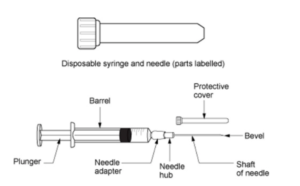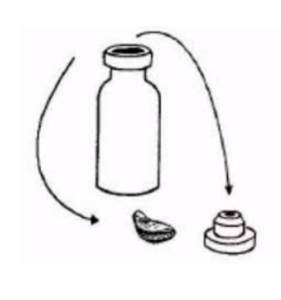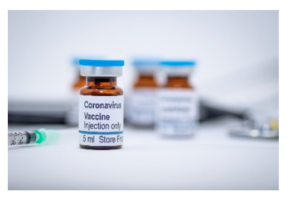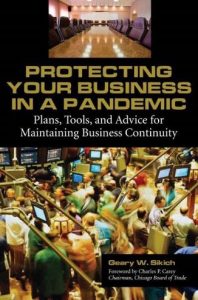 The rush to develop a vaccine for COVID19 is making headlines on a daily basis. But have we asked the right questions? Let us say that a vaccine is discovered and it is proven effective. The world rejoices! We have beaten the coronavirus. Or have we?
The rush to develop a vaccine for COVID19 is making headlines on a daily basis. But have we asked the right questions? Let us say that a vaccine is discovered and it is proven effective. The world rejoices! We have beaten the coronavirus. Or have we?
Some questions come to mind. What exactly does having a vaccine mean? Should you be happy or worried? Should you rush to the hospital, drug store, etc. to get your shot? Have you any idea where to get your shot? Do you realize that vaccines come in sealed vials consisting of different components? The syringes used for administering the vaccine consist of several different parts, do you know where they come from? What is the status of the production of the vaccine, syringes, vaccine vials, the supply chain delivery system? These and many other questions come to mind.
How will they be answered and how long will it take to answer them?
Syringes
 Do you know the component parts of a syringe? Syringes are extremely simple tools; they generally consist of 7 pieces. The tip of the syringe is where the needle attaches, the stopper that prevents leaking of medication, the barrel of a syringe is used for holding the fluid and has small graduations on the outside that marks how much fluid is in the syringe usually in cubic centimeters (cc) or milliliters (ml).
Do you know the component parts of a syringe? Syringes are extremely simple tools; they generally consist of 7 pieces. The tip of the syringe is where the needle attaches, the stopper that prevents leaking of medication, the barrel of a syringe is used for holding the fluid and has small graduations on the outside that marks how much fluid is in the syringe usually in cubic centimeters (cc) or milliliters (ml).
At the end of the syringe, the flanges are wings that come out of the side and lets the user rest their fingers on them, the plunger rod is a piston-like device inside of the barrel, and the thumb press is where the user presses on to push the plunger into the barrel.
- Tip: Where needle attaches to.
- Stopper: Prevents leakage of medication.
- Barrel: Reservoir for holding liquid.
- Graduations: Scale markings usually in cubic centimeters (cc) or milliliters (mL).
- Flanges: The wings that jut out of the side of the barrel
- Plunger Rod: Piston like device inside the barrel.
- Thumb Press: Where clinician presses to push plunger rod down into the barrel
There are different types of syringes. Each of type of syringe has its own pros, cons and uses. The size of the syringe varies by how much fluid is needed by the injection. It will take time to get an adequate supply of syringes because they are not generally manufactured in the United States or, for that matter, in too many parts of the world (read here China, India as primary suppliers).
Vaccine Vials
 Vaccine vials are also simple, generally consisting of three parts. However, as with syringes, vials do come in a variety of shapes, sizes and different construction. Manufacture and assembly of vials, including filling them with a COVID19 vaccine will take time. It will take time because they are not generally manufactured in the United States or, for that matter, in too many parts of the world (read here China, India as primary suppliers).
Vaccine vials are also simple, generally consisting of three parts. However, as with syringes, vials do come in a variety of shapes, sizes and different construction. Manufacture and assembly of vials, including filling them with a COVID19 vaccine will take time. It will take time because they are not generally manufactured in the United States or, for that matter, in too many parts of the world (read here China, India as primary suppliers).
COVID19 Dosage
 Currently no one knows what dosage will be needed to immunize a person. Will it take a single shot? Or, will it take two shots to effectively immunize a person. There is a lot of speculation that it may take two shots. If that is the case then, just for the USA we are looking at over 600 million doses; that is a lot of vials and syringes. Even if a method of producing a syringe pre-filled with the vaccine is developed (currently being studied), a problem exists in that so far, the attachment of the needle to the syringe has not been successfully accomplished (based on the research done in preparing this article).
Currently no one knows what dosage will be needed to immunize a person. Will it take a single shot? Or, will it take two shots to effectively immunize a person. There is a lot of speculation that it may take two shots. If that is the case then, just for the USA we are looking at over 600 million doses; that is a lot of vials and syringes. Even if a method of producing a syringe pre-filled with the vaccine is developed (currently being studied), a problem exists in that so far, the attachment of the needle to the syringe has not been successfully accomplished (based on the research done in preparing this article).
Euphoria Over the Vaccine
As you can readily see from the above presentation of data, euphoria over the discovery of a vaccine could be short lived. Reality, when it sets in, hits us with complexity in four areas:
- Vaccine production
- Vaccine vials
- Syringes
- Vaccine Dosage
A simple mistake, getting caught up in linear thinking – problem to solution, reveals the complexity of actually immunizing a population. Will the world would be caught flat footed again, by finally developing a vaccine only to find that critical pieces (vials, syringes) are not in adequate supply? What about the means of distribution for the vaccine? How will distribution be implemented? Logistics will play a critical role in getting the vaccine to the population. And, what about the rest of the world? Can one think that the rest of the world will sit idly by waiting for the vaccine to reach them?
Prepare Now
It is too late to lament the fact that production is limited within the US. We need to ramp up preparations now. One way of doing this is to expand existing capabilities, i.e., manufacturing facilities. Another, is to convert industries to be able to manufacture vials, syringes, etc., much as the automotive industry did with ventilators and other industries did with masks and other personal protective equipment (PPE).
We are taught linear thinking and do not connect the dots outside of what is readily visible. We therefore end up with “transparent vulnerabilities” that can cascade in unanticipated ways.
The Time is Now, Do Not Delay
Even though the near-term effects of the coronavirus pandemic (COVID19) are impacting everyone, as we see in the measures taken to “flatten the curve” and develop a vaccine. It is still difficult to predict and end to the pandemic. We can clearly see that the long-term effects will be felt in all sectors of society, government and business long after the pandemic burns itself out. Given the complexity of developing a vaccine, producing and distributing it we need to take action now to get the materials needed to immunize the population (vials, syringes, etc.) into production. We cannot allow ‘decision paralysis’ and linear thinking to lead to unforeseen consequences and crisis.
We wouldn’t be in such a precariously situation if we had recognized the over concentration and dependence of a global economy that inherently lacks resilience due to the concentration of resources with little or no alternative solutions.
BIO:
 Contact Information: E-mail: G.Sikich@att.net or gsikich@logicalmanagement.com. Telephone: 1- 219-513-6244.
Contact Information: E-mail: G.Sikich@att.net or gsikich@logicalmanagement.com. Telephone: 1- 219-513-6244.
Geary Sikich is a seasoned risk management professional who advises private and public sector executives to develop risk buffering strategies. With a M.Ed. in Counseling and Guidance, his focus is human capital: what people think, who they are, what they need and how they communicate. With over 30 years in management consulting as a trusted advisor, crisis manager, senior executive and educator, he brings unprecedented value to clients worldwide. Well-versed in contingency planning, risk management, human resource development, “war gaming,” as well as competitive intelligence, issues analysis, global strategy and identification of transparent vulnerabilities. He has developed more than 4,000 plans and conducted over 4,500 simulations from tabletops to full scale integrated exercises. He began his career as an officer in the U.S. Army after completing his BS in Criminology. As a thought leader, Geary leverages his skills in client attraction and the tools of LinkedIn, social media and publishing to help executives in decision analysis, strategy development and risk buffering. A well-known author, his books and articles are readily available on Amazon, Barnes & Noble and the Internet.